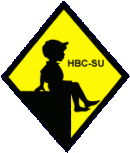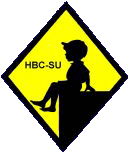
American boys boys commonly wore headwear to school in the 19th and early-20th century. Headwear was much more common than is the case today. This is a little difficult to follow because the children in most school portraits are not wearing their caps and hats and school portraits are our main source of information on schoolwear. As few American children wore uniforms, the hats and caps they wore were basically their regular headwear. And for much of the 19th century this meant rounded-crown hats, especially in rural areas. We also see a variety of caps with military styles popular, especially during mid-century with Mexican War and Civil War styles popular. Children wore the headwear they had to school, not any special types. We have little information on the early-19th century. Thanks to photography we know much more beginning in the mid-19th century. Unfortunately the children are not wearing headwear in many school portraits, but there are so many school photographs that we have a fairly good idea. Sometimes with outdoor portraits, the boys are holding their caps and hats. And with the 20th century and the advent of the snapshot we begin to see children on the way to and from school, often with their caps in the early-20th century. And for a time the flat cap was ubiquitous for American boys going to school. This began to change in the late-1930s. Since World War II, headwear has become less common for boys and even more so for girls, except on rainy days or during the cold winter weather. We also see baseball caps emerging as the principal headwear for boys when they bothered to put on a cap. And we never see hats any more.
American boys boys commonly wore headwear to school in the 19th and early-20th century. Headwear was much more common than is the case today. Children very commonly wore hats and caps to school. This is a little difficult to follow because the children in most school portraits are not wearing their caps and hats and school portraits are our main source of information on schoolwear. As few American children wore uniforms, the hats and caps they wore were basically their regular headwear. We have very limited information on the early-9th century. We note some boys wearing military caps wsith tassles. And for much of the 19th century beginning we think in the 1830s, this meant rounded-crown hats, especially in rural areas. American boys would commonly wear the rounded-crown hat into the 1890s. We also see a variety of caps with military styles popular, especially during mid-century with Mexican War and Civil War styles popular. There seems to have been a demographic shift. Wesee founded-crown hsts in rural areas and stylish caps being worn by smartly dressed irbn children. Children wore the headwear they had to school, not any special types. Thanks to photography we know much more about the headwear children wore beginning in the mid-19th century. Unfortunately the children are not wearing headwear in many school portraits, but there are so many school photographs that we have a fairly good idea. We see the Funtleroy craze appearing in the 1880s, but boys rarely wore these styles to school such as the wide-brimmed hat. A factor here was age, the Fauntgleroy suit was primarily, but not exclisively for pre-school children. We do see girls wearing wide-brimmed hats. Sometimes with outdoor portraits, the boys are holding their caps and hats. We note a range of caps in the late-19th century. Impages with the girls holding their hats are much less common.
With the 20th century and the advent of the snapshot we begin to see children on the way to and from school, often with their caps in the early-20th century. We see both hats and caps in the 19th century, but in the 20th century we rarely see boys wearing hats. At the beginning of the 20th century we see a variety of caps. And for a time the flat cap was ubiquitous for American boys going to school. Tams and berets wee popular for girls. This began to change in the late-1930s. Since World War II, headwear has become less common for boys and even more so for girls, except on rainy days or during the cold winter weather. We also see baseball caps emerging as the principal headwear for boys when they bothered to put on a cap. The most obvious shift is the fact that so few boys were wearing any kind of headwear by the end of the century. And we never see hats any more for eother boys or girls.
Related Chronolgy Pages in the Boys' Historical Web Site
[Main Chronology Page]
[The 1900s]
[The 1910s]
[The 1920s]
[The 1930s]
[The 1940s]
[The 1950s]
[The 1960s]
[The 1970s]
[The 1980s]
[The 1990s]
[The 2000s]
Navigate the Relate Boys Historical Clothing Style Pages
[Main country page]
[Long pants suits]
[Short pants suits]
[Lederhosen]
[Kneesocks]
[Eton suits]
[Jacket and trousers]
[Blazer
[School sandals]
Navigate the Boys' Historical Clothing School Uniform Pages
[Return to the Main U.S. school regular headwear page]
[Return to the Main U.S. school regular garment page]
[Return to the Main U.S. school garment page]
[Return to the Main National School Uniform Page]
[Australia]
[England]
[France]
[Germany]
[Ireland]
[Italy]
[Japan]
[New Zealand]
[Poland]
[Singapore]
[Scotland]
[Singapore]
[United States]
Navigate the Boys' Historical Clothing Web Page
[Introduction]
[Activities]
[Biographies]
[Chronology]
[Cloth and textiles]
[Clothing styles]
[Countries]
[Topics]
[Bibliographies]
[Contributions]
[FAQs]
[Glossaries]
[Images]
[Links]
[Registration]
[Tools]
[Boys' Clothing Home]
